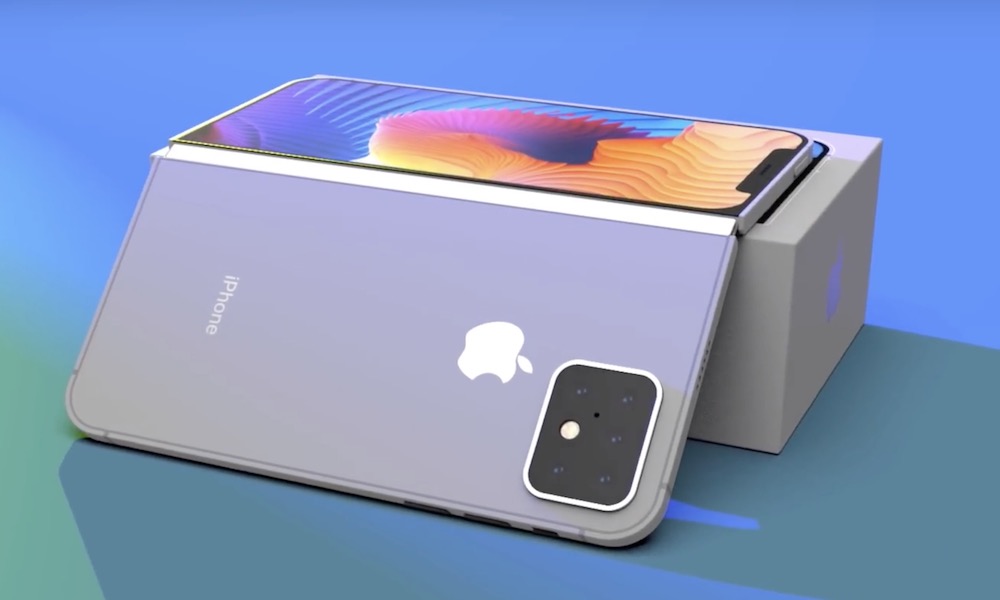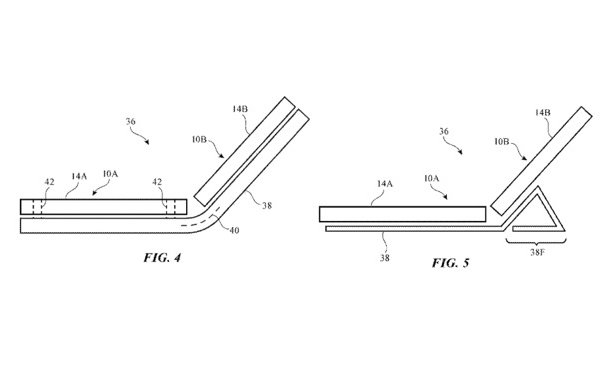This New Patent Shows How Apple Could Build a Folding iPhone
 Credit: EverythingApplePro
Credit: EverythingApplePro
Toggle Dark Mode
If there’s anything to be learned recently from Samsung and Motorola, it’s that making a folding smartphone is hard. Even in these days of flexible OLED displays, early attempts at creating a reliable fold have been far better in concept than in their actual execution.
While many are wondering when Apple is going to bring this design to the iPhone, the fact is that Apple is more concerned about doing something right than doing it first, and thus far, folding smartphones are largely in the territory of gimmicky proofs-of-concept rather than mainstream products.
Apple simply doesn’t play in that particular sandbox — every iPhone that the company has ever released has been intended to have mass consumer appeal rather than appeasing the techies who insist on their own definition of “innovation.”
This doesn’t mean that people don’t want a folding iPhone — a survey conducted last year suggested that over a third of consumers expressed “reasonably high” interest in purchasing one, but they also made it clear that they didn’t want to pay a huge premium for the feature, and of course they want it to work properly.
Much of the demand for folding smartphones also still seems to be concentrated in China at this point, and while that’s certainly an important market for Apple — it’s the company’s second-biggest, after all — Chinese consumers have long shown a hunger for many leading-edge features, so this is probably just one of several.
Again, though, Apple isn’t about to release a folding iPhone until it has perfected the technology to the point where it’s 100 percent reliable, and it’s clearly been working for years on how to do this. If we haven’t seen a folding iPhone yet, it’s likely because Apple has yet to figure out how to do it right.
A New Approach
A new patent uncovered by AppleInsider suggests a novel approach that Apple might be able to take with a folding iPhone, however, that would help it to avoid all of the pitfalls that rivals like Samsung and Motorola have encountered with trying to make a screen wrap around a hinge.
Apple has explored other ways to avoid the wear and tear on the OLED panel that has been the bane of other Folding iPhones, but it turns out that perhaps the solution may be to avoid a hinged screen entirely, and just use two separate screens that meet up electronically.
We already saw a patent last year for a wraparound display, which would be cool in itself, but it could also pave the way for a folding iPhone simply by combining two of these displays and letting them sync up wirelessly.
The method described by U.S. Patent No. 10,585,708, which is titled “System with multiple electronic devices” would allow two or more screens to automatically link up when placed in close proximity in order to work together. While there are a lot of possible applications for this, such as displaying a video wall using multiple iPads, Apple also specifically describes how the technology could be used to connect two iPhones to produce a single bendable device.
Combined with a display that wraps around the side of the iPhone, this would allow for a folding device that used only a physical hinge to link the pieces together, rather than the need to span a single OLED panel across the fold. While this wouldn’t offer a completely seamless one-screen experience, of course, since there would still be a gap between the two sides, it could definitely ensure that the folding iPhone isn’t plagued by the wear-and-tear problems of rival devices, and could allow Apple to release a folding iPhone, or even folding iPad sooner rather than waiting for screen technology to mature to the point where a single-panel device would be more feasible.
In fact, this is the kind of approach that Microsoft seems to be taking with its upcoming Surface Duo, which is teased at its hardware event last fall. While the Duo won’t necessarily link up the screens in the same way as the patent that Apple describes, it’s a folding device that uses two separate OLED screens rather than trying to make a single one go over the bend, and uses the hinge area as a bezel for user interface gestures.
Of course, Apple’s patent offers a ton of other really cool possibilities, including pairing up two independent iPhones or iPads to extend the screen, play different channels of audio, link cameras and other sensors, and more. That said, Apple patents a lot of ideas that never make it into actual products, so while it’s interesting to speculate on what this might mean, it’s likely just one of many avenues of research that the company is pursuing right now.







